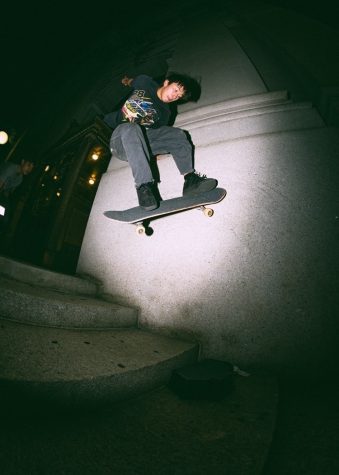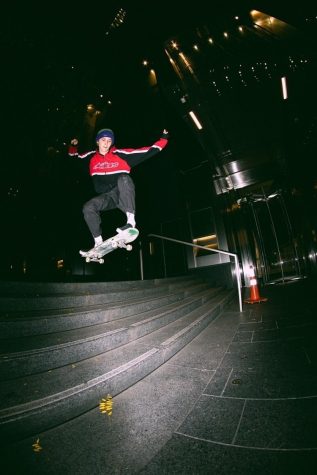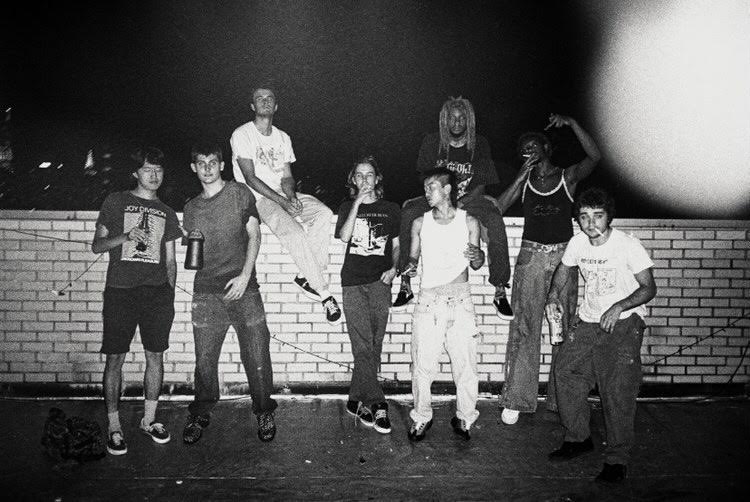When asked by high school friends and relatives to describe the average NYU student, I am forced to answer with the word “poser.” Poser: A young person enamored by a wide variety of hobbies and identities who lives in a city that offers the chance to pursue them, but lacks the focus or commitment to make them a genuine part of their identity. Putting 20,000 young — often financially well-off — people without much life experience or self-knowledge in a cultural hub like New York City inevitably results in a culture of shallowness.
The poser middle-parts their hair after watching Timothée Chalamet have relations with a peach in “Call Me by Your Name.” The poser watches an episode of Kaia Gerber’s Supermodel Book Club on Instagram Live, pays $30 for the 400-page novel that Gerber discusses, and flips through its first five pages while sitting on a bench in Washington Square Park — cross-legged and in the open, for everybody to see — only to never touch the book again. The poser buys a Celine bag and declares themself fashionable; the poser goes to Metrograph once and declares themself a cinephile. The poser pays $11 for a single shot and christens themself with the cheap liquid of pseudo-adulthood every Friday night.
The poser is a deeply unfortunate product of the digital world. Ours is the first generation to grow up on social media, exposed from a young age to a wider variety of lifestyles and cultures than ever before. This abundance of niche interests, each more vulnerable to appropriation and hijacking than the next, breeds affectation. The dreadful softboy shows his barber a picture of 2017 Chalamet and suddenly deems himself sensitive and sophisticated. The dark academic shows off their bookshelf of unread poetry on TikTok. The pseudo-Marxist hears the term social chauvinism mentioned in a lecture and develops the habit of blaming any minor inconvenience on social chauvinism.
And the skate poser, a storied term that has only risen in use since its inception in the 20th century, feeds off of skateboarding culture for social status. Draped in clothing from skateboarding-influenced fashion brands, they hang out at skateparks but don’t actually skate, instead posting their outfits online to boost their perceived persona — an egoist among purists.

Until my recent conversation with roommates Cannon Michael and Yoshi Nakada, NYU juniors and founders of the New York-based skateboarding collective 222, it was my impression that disdain for posers is a shared and universal feeling — especially among those who take the time and commitment to truly master the craft that the poser hijacks. You can imagine my surprise when they expressed the opposite sentiment, arguing that perhaps the poser is just a purist getting started.
“It’s a negative term in many ways,” Nakada, who began skating in San Francisco many years before moving to NYU, said. “It’s very discouraging to be called a poser when it’s something you really care about.”
Michael, from Fresno, California, concurs. Though he certainly doesn’t deny the existence of people who appropriate skateboarding culture, he notes that the popularity of the label itself suggests a culture of gatekeeping within skating communities. After all, even the greatest skaters began as novices.
“If you’re one to focus on people who you think are posers — to constantly talk about it or ridicule them — then, in some ways, you are even worse than the people you are trying to crucify,” Michael said.
When Michael met Nakada and their future friend Nico Love, a Tisch junior, in the Third Avenue North Residence Hall during their first year at NYU, he had nearly zero experience on a skateboard.
“I mean, I knew how to push around on the board and whatnot,” Michael said. “But I couldn’t pop my board at all.”
Nakada and Love, on the other hand, had multiple years of experience under their belts.
“I felt very intimidated by them when I first met them — they were just really good at skating,” Michael said.
But, time and time again, Nakada and Love still invited him to skate with them.
“They helped me progress super fast,” Michael said. “That’s the quickest way to get better at skating — being motivated by people who are better than you … Driving you to do shit that scares you.”
According to Nakada, few things are more pathetic than putting down novice skaters.
“No one should actually be going to a skatepark with the intent of making other people feel bad,” he said.

His desire to push Michael as a skater bled into a practice of inviting others to skate with them. Eventually, the group developed a habit of meeting on the staircase of 222 E. 12th St., a building near Third North, before skating. After COVID-19 forced them back to their respective hometowns in early 2020, the group kept in touch through a group chat named “222.” Soon, their collective, a group of artists tied together by skating, was born.
When the group returned to New York after lockdown, Michael saw an opportunity to produce their first artistic project together.
“I used some money that I had gotten from a birthday that June to buy a Sony VX-2000, which is an old-school skate camera, and a fisheye lens,” Michael said. “Then I came back to the city and we just started filming for our first video.”
In filming what would become “222,” their skate video — a collection of their skating clips filmed throughout New York City — the group members were just as concerned with employing their diverse creative abilities as their skating abilities.
Love, a “super bona fide ripper” (or talented skater) in the eyes of Michael, worked with Michael on a set of animated segments for the video, a project that led him to his now-blossoming career as a freelance animator. Also featured is Simon Rosenthal, a fine arts major whose drawing abilities and sensibility as a filmmaker helped shape the video’s visual aesthetic. Takashi Soehl, a photography student, filmed clips for the video while collaborating on printed photographs with Rosenthal. And Nakada, whose obviously advanced skating in the video is just a fraction of what he can do, lent Michael his sense for visual design and music during the editing process.

